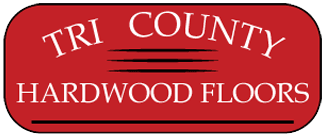Frequently Asked Questions
- Q: Do I need to remove my furniture?
- A. I ask that you remove all the smaller items and I will help move the larger items off your floor on the morning I begin the job.
- Q: When can I put my furniture back?
- A. My general rule of thumb is that furniture can be placed back onto the floor 24 hours after the last coat of polyurethane is applied. Area rugs will need to be kept off of the floor for the entire cure time of your chosen polyurethane.
- Q: How many times can a floor be sanded?
- A. A solid ¾” tongue and groove floor should be able to get 5 to 6 professional sanding’s, provided the sub- floor was somewhat level to begin with. Top-nailed strip should be able to get 3 to 4 professional sanding’s.
- Q: What is the procedure for refinishing floors?
- A. The floor is sanded multiple times with progressively finer grits of paper to level the floor and remove old finish. Then 3 or 4 coats of your selected finish are applied to the floor. Light sanding occurs between each coat to minimize contaminants in the finish.
- Q: Can I change the color of my floor?
- A. Yes, I have multiple stains for you to choose from. On the first day of process I will apply samples to your floor for you to preview and make your selections.
- Q: How long will it take to sand and re-finish my floors?
- A. Four to five days to sand and finish a floor of a room that is approximately 500 square feet in size. The condition of a floor may cause for a longer than expected process. This will become clear as the floor is sanded. I inform all my customers about the progress of their floors.
- Q: How long will it take for the finish to dry so that I may walk on the floor?
- A. Refer to the Finish Comparison chart for dry time guidelines. Please note that every home has different environments which may affect the dry time.
- Q: Do I have to leave my house?
- A. If the sanding procedure can be tolerated by the homeowner, if a room can be avoided from the time that the room is sanded to the end of the finish’s dry time. Some finishes are strong-smelling and may cause for alternative sleeping plans. Ask me about my environmentally-friendly waterborne finishes.
- Q: What about my pets?
- A. Pets just like homeowners need to avoid the room during the entire sanding and refinishing process.
- Q: Should I choose a water-based finish or an oil-based finish?
- A. There are advantages to both. Please refer to the Finish Comparison chart below to make your best selection.
Finish ComparisonWater BasedOil BasedDry Time2-4 Hours24 HoursCure Time / Endurance7 days the finish will be 70% cured after 24 hours. TRAFFIC and NATURAL commercial grade MEGA is comparable to oil base without the amber color, and withstands normal residential traffic14 days the finish will 50% cured after 72 hours Oil is the traditional finish that has been used for years and withstands normal residential traffic CostCost$$TRAFFIC and NATURAL $$$MORE$$$LESS
- A. There are advantages to both. Please refer to the Finish Comparison chart below to make your best selection.
- Q: Do you remove carpet?
- A. Yes. I will remove and dispose of your carpet, pad, and tack strips at an additional cost
- Q: Under my carpet are black spots. What are they and can they be repaired?
- A. Black spots on a floor could mean a couple of different things. They can be caused by water damage from a flower pot, water leak, or a pet stain, which leaves an ammonia burn on the finish. Normally I attempt to sand the black spots out and if unsuccessful I can replace the damaged boards.
- Q: What is the best way to clean and maintain my floor?
- A. Vacuum or sweep floor regularly. Remove spills promptly. For easy cleaning, use a high-quality hardwood floor cleaner, such as Bona Kemi’s Hardwood Floor Cleaner, which I recommend.
- Q: There are boards missing or damaged in my floor. Can your repair my floor?
- A. Yes. Most floors can be repaired or replaced, although some repairs are easier than others. Repairs such as dented or broken boards and patched areas that require a spliced in section are common occurrences in the flooring trade.
